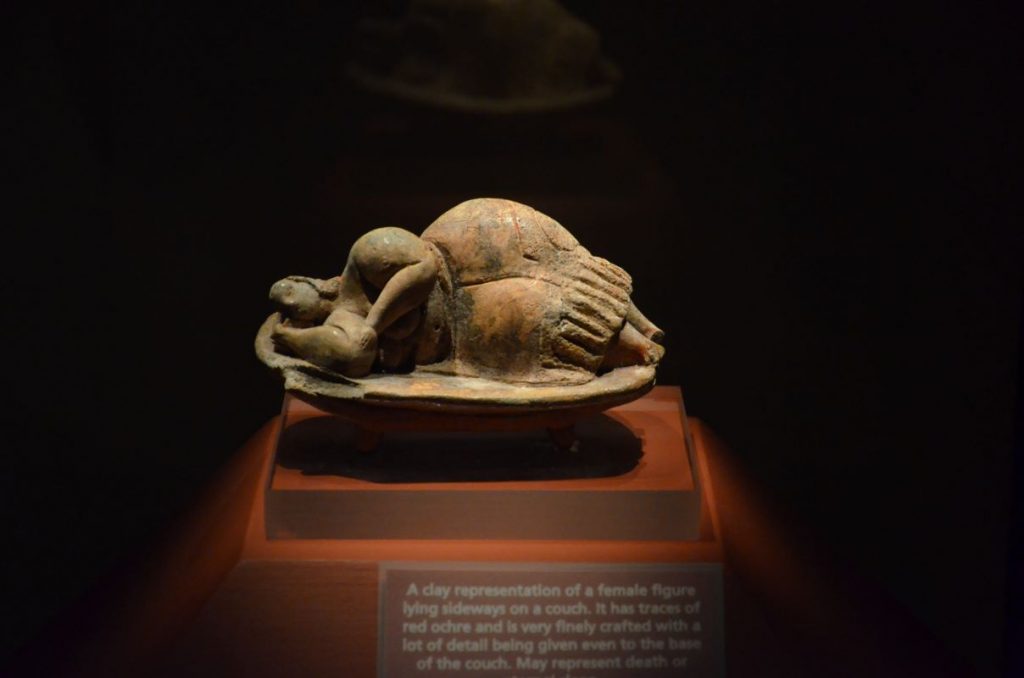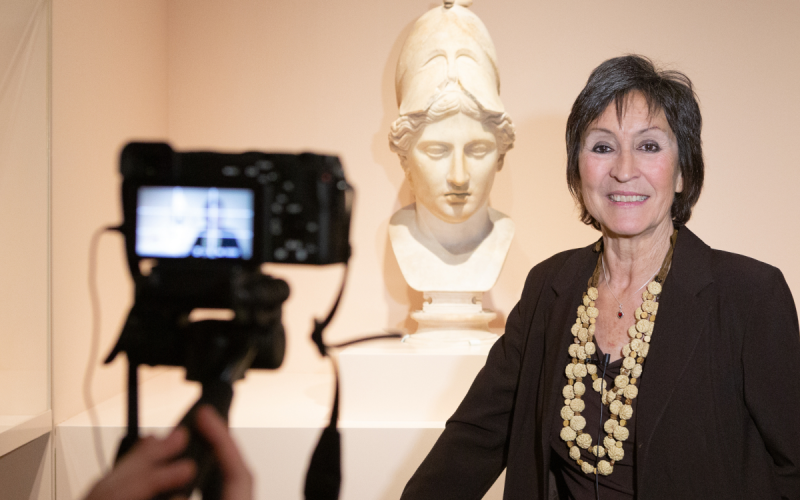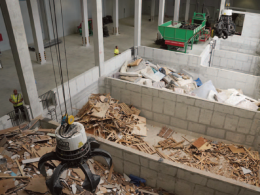The second edition of the Malta Biennale, an island-wide event that brings together contemporary art and cultural heritage was launched last week. The event presents thought-provoking art, from sculpture and installations to performance pieces, in spaces of national significance from The Grand Master’s Palace and Fort St Elmo to Gġantja and Gozo’s Citadel.
The first edition of the Malta Biennale was held last year and involved 100 artists from 35 nations: their work was showcased across 21 historic sites, the majority of which administered by Heritage Malta, and some of which are not usually open to the public.
The featured artists included Maltese talent: Austin Camilleri, for example, explored the tension between the past and the present on Republic Street with Siġġu, a stone sculpture of an empty throne, temporarily positioned in front of the statue of a seated Queen Victoria’s statue in Republic Street. Replicating the original without the regent, it elicited a conversation about the place of colonialism in Malta’s past and whether such tangible elements of the islands’ heritage should continue to be fêted or be erased.
Building on the success of the first edition in 2024, the next Malta Biennale will take place from March 11 until May 29, 2026, with acclaimed international curator Rosa Martínez at the helm as artisticdirector. The intention is that the event will be bigger and bolder, with a theme of CLEAN | CLEAR | CUT and, excitingly, will also include satellite events, a new addition for 2026.
The theme weaves together three elements:
Clean: Stop environmental, ethical and aesthetic pollution. Purge, digest, expel;
Clear: Discern, decipher, elucidate, understand;
Cut: Break away, radically shift direction, open new paths, offering a multitude of possibilities for creative thinkers to showcase concepts, to innovate, to inspire and to entertain.
Might a work envoke the need for ecological and environmental awareness with clean lines, aesthetically, and a clear call to action? Might the sound of the crystal clear sea around the Maltese islands provide a soundscape for an installation whilst a sleeping lady in transluscent glass reflects upon our neolithic heritage or suggests a clear vision for the future? Can we look forward to seeing more golden stone carved into thought-provoking forms, paper-cut sculpture that casts shadows from the past, or an innovative door installation inspired by the idea of sectors of society that are cut from view. Where are your thoughts taking you?

The call out for artists to participate is now open: artists here – and globally – may make a submission for projects and exhibitions between now and June 30 2025.
In addition, embassies are invited to organise national and/or thematic pavilions (submissions by August 29 202), and ideas for satellite events should be submitted by July 25 2025.
At last week’s event, the Minister for National Heritage, the Arts, and Local Government, Owen Bonnici, said that the Malta Biennale proves that our country can be an international centre of culture, where contemporary art dialogues with the island’s historical past.
“The success of the Biennale, with recognition from UNESCO, together with strong foreign interest, demonstrates Malta’s potential in the cultural sector. This platform not only gives space and opportunity to artists but also offers a unique experience to Maltese and visitors alike, thanks to all its participants. This is but the beginning of a success story,” Bonnici concluded.
Mario Cutajar, president of the Malta Biennale, expressed how the second edition of this international exhibition of contemporary art will continue to build upon the premise adopted for the inaugural edition in 2024.
At its core, the Biennale creates an open dialogue with contemporary art, through which we may glean knowledge of our past and our history, but also of ourselves and our identity, he explained.
The Malta Biennale is, therefore, the backbone of the vision which Heritage Malta has been actively developing to help safeguard the islands’ cultural heritage. Simultaneously, the Biennale creates increased opportunities for Maltese artists, by building upon the successes of the first edition that placed Malta on the international contemporary art map, and by showcasing our cultural heritage and all that makes us Maltese and Mediterranean.

Cutajar concluded by saying that the second edition aspires to strengthen this international platform further, by looking optimistically ahead towards future editions.
During her speech, artistic director Rosa Martínez noted how her curatorial experiences in Malta in 2018 and 2022 awoke in her “a permanent interest in the cultural development of the island […] Now I feel a strong desire to offer again my professional experience and my updated visions to the young Biennale.”
Martínez brings her extensive expertise in international bienniales and thematic exhibitions to the Malta Biennale. Supported by a curatorial team composed of Antoine Borg Micallef and Alexia Medici, she expounded upon the thematic and conceptual framework selected for the second edition of the Biennale, and how the title of the 2026 edition was carefully constructed.
“The Biennale will question how contemporary art can enhance critical awareness of our past and present, while fostering the experience and enjoyment of beauty. It will also address some of the most pressing needs of our time by promoting dialogues between the rich cultural heritage of the Maltese archipelago, contemporary thought and innovative artistic practices.”
Further details of the calls for artists, pavilions and satellite events
The Malta Biennale is organised by Heritage Malta, in partnership with Arts Council Malta and in collaboration with the Office of the Deputy Prime Minister and Ministry for Foreign Affairs, and the Ministry for National Heritage, the Arts, and Local Government and with VisitMalta.










